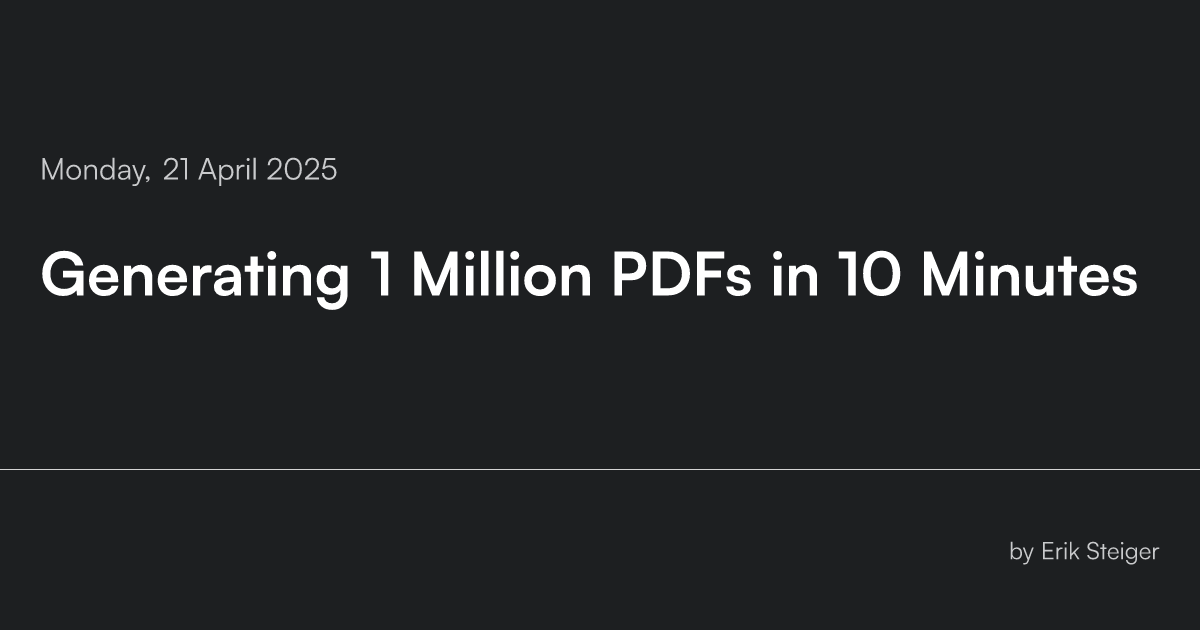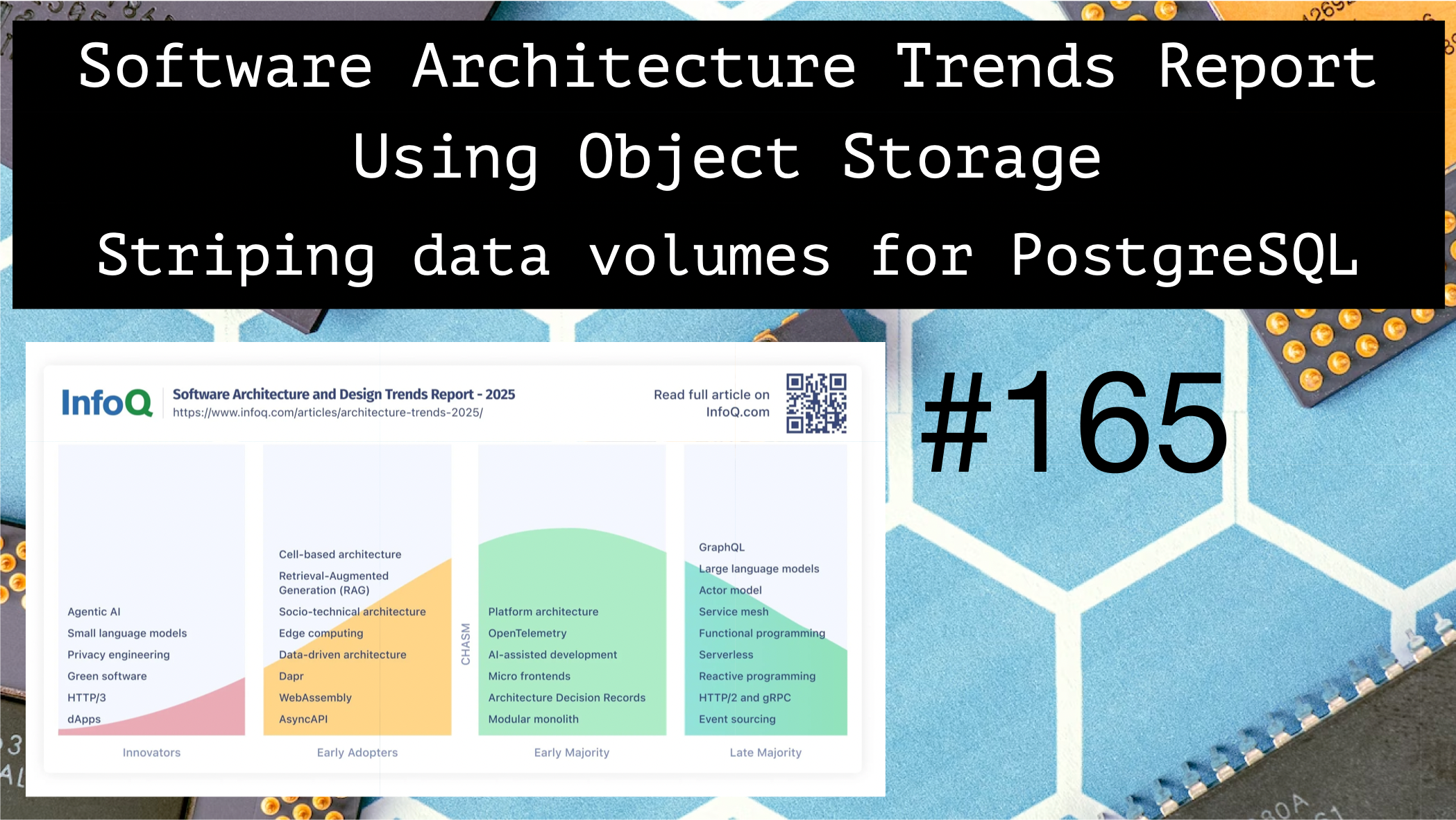Architecture Weekly Issue #165. Articles, books, and playlists on architecture and related topics. Split by sections, highlighted with complexity: 🤟 means hardcore, 👷♂️ is technically applicable right away, 🍼 - is an introduction to the topic or an overview. Now in telegram and Substack as well.
System Design Course Cohort #5 is open!

Typical system design courses teach technical skills but often overlook the connection to business problems. This course fills that gap, emphasizing the importance of recognizing and addressing business priorities with technical approaches. Learn to go beyond load balancing options and performance tactics by focusing on solving real business challenges. Now - accompanied by the AI tools! Course was already completed by 50+ engineers with great feedback!
SIGN UP HERE: ONLY a single slot left!
Highlights
InfoQ Software Architecture and Design Trends Report - 2025 🍼
You won't be surprised seeing agentic AI in software architecture. What is interesting though is the Cell-based architecture and Socio-Technical engineering. If you interested in the latter, feel free to watch the relevant interview with an expert in this field Yevgen Nebesov.
#architectureSo you want to use Object Storage 👷♂️
Object storages are a standard de-facto: multiple databases use them without any additional layers in between, mutiple SaaS work with S3 directly, etc. At scale though you will face the issue of tale latency which will byte you. You will find 3 mitigation strategies and the research results which states that waiting just 250ms before sending the same request pretty much solves the problem.
#performance
Striping Postgres data volumes 👷♂️
“Stripes” here are individual AWS EBS gp3 volumes combined in a RAID-0 / LVM-stripe, where each 8–32 kB chunk of your Postgres data lands on a different volume, letting you multiply throughput and IOPS with the same cheap disks—a genuine free lunch if you don’t mind RAID-0’s fragility.

#db #performance
Follow-Up
Generating 1 Million PDFs in 10 minutes 👷♂️
Generating tons of PDF files are is relatively common: let's say you want to regenerate old invoices(like what happened in Bolt). The AWS Lambda with the addition of SQS makes this task relatively simple, and you will find the working design in the post.

#serverless
Process millions of observability events 👷♂️
Apache Flink is a cloud-native engine that treats streams as the default data model, offering exactly-once stateful processing, unified batch execution, and a rich SQL/stream API palette—making it the go-to choice whenever you need analytics or ETL on data that never stops coming. With the new Flink-Prometheus connector you can preprocess your observability data(like enrichment, filtering, etc.) and stream it right into Prom.

#observability
Lessons Timeouts, Retries and Idempotency from Sam Newman 👷♂️
A short refresher on the pillars of distributed systems: timeouts, retries and idempotency. Remind yourself that timeouts should be balanced, retries should be and it is safe to retry the requests.
-1744206420441.jpg)
#distributedsystems
Five years of React Native at Shopify 🍼
In 2018 I was making a taste of React-Native, while it was at it infancy. But later big players bet on RN too. Choosing mobile technology is a frequent task for software architects; and now you can see from the experience of the whales like Shopify that it can be a viable choice. Don't forget that native expertise is important too!

#mobile
Big thanks to Nikita, Constantin, Anatoly, Oleksandr, Dima, Pavel B, Pavel, Robert, Roman, Iyri, Andrey, Lidia, Vladimir, August, Roman, Egor, Roman, Evgeniy, Nadia, Daria, Dzmitry, Mikhail, Nikita, Dmytro, Denis and Mikhail for supporting the newsletter on Patreon!






